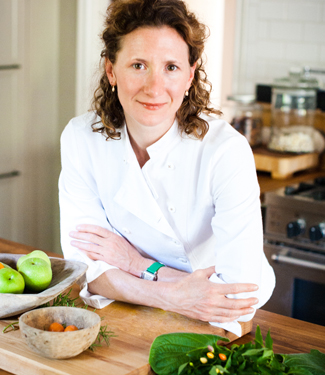Since planting her roots in
San Antonio in 2008 as a Latin cuisine specialist at the Culinary Institute of America, chef-instructor Elizabeth Johnson has helped throngs
of budding chefs flourish in her craft.
Collaborating with area
farmers and the San Antonio Botanical Garden, Johnson redefined “locally
grown” when she founded the Latin Seed Research Program in 2009 and began cultivating
specialty Latin produce stateside that was unavailable commercially.
In
2012, she helped conceptualize and launch the student-run restaurant NAO, adjacent to the school in the Pearl Brewery. Fusing indigenous ingredients
and time-tested techniques from south of the border, diners can expect an
authentic ethnic experience that’s ever-changing with an eclectic menu that
rotates regularly between Latin countries while utilizing the seasonal Texas
bounty.
This spring, her latest
contribution to San Antonio’s culinary landscape is sprouting up in the Mahncke
Park neighborhood on the edge of Brackenridge Park at Broadway Street and East
Mulberry Avenue.
Taking
her expertise beyond the costly corridors of the CIA, she’s created Crave Market – a retail “classroom” where
customers will be empowered with “tech knowledgeable” iOS tools to guide them
through the store, pinpointing where to go and what to eat based on present-day
symptoms and side-effects.
Crave
Market’s “21st century convenience store” concept will offer
grab-and-go gourmet meals where Latin-food lovers will enjoy healthier takes on
classic fare from vegetarian tamales made with super foods like quinoa, pumpkin,
popped amaranth, and chunky salsa to atoles
– delightful drinking porridges that originated in Mexico.
A
salad bar case will blend chef-prepared selections and highlight the desert
terroir of Texas with an area focused on foraging and edible weeds. “We will be
showcasing ingredients in a way that gives people new ideas on how to eat,
using proper nutrition to alleviate problems,” Johnson said.
Paramount
in this problem-fighting is a selection of bottled 8-ounce potions, made by
artfully blending hydraulic-pressed juices according to the principles of
Ayurvedic medicine. Her recipe for wellness is not a quick-fix juice detox,
rather, incorporating one to two juices daily as part of a rounded diet.
Between two and half and three pounds of produce are used in every serving of these principally
vegetable-based beverages. For satiety
without the sugar high, no tropical fruit should be juiced, “People should be eating tropical fruit, not drinking it!” Johnson explained. Many flavor profiles have a base of carrot and orange, with ginger and lemon
for kick. “Nutritional synergy” and nectarous finish is achieved using dates
instead of sugar and artificial sweeteners.
Recently named the chief purveyor of a new farm-to-table hospital
concept in nearby New Braunfels with a growing roster of corporate clients, Johnson has offered San Antonio locals and online customers a head start on
the healing benefits in advance of her spring store opening.
Besides
being hailed by Texas tastemakers as beneficial beverages, Crave Market juices
are kitchen companions that can help a home chef create restaurant-worthy fare
in a flash. Use as a mise en place for plating
with panache or mix them into sauces for a boost in both nutrition and flavor. Here’s a great recipe to get you started: Johnson’s classic Peruvian tiradito made with Crave Market’s celery juice!
Beet, Grapefruit, and Tuna Tiradito
- 8 ounces of beets, roasted with skins removed
and sliced into 1/8” rounds - 1 cup of ruby red grapefruit, peeled and
sliced into supremes - 8 ounces of Ahi tuna, sashimi sliced on the
bias - 4 ounces of Crave Market celery juice
- 1 garlic clove (grated)
- 1 teaspoon of ginger (grated)
- 2 ounces of Meyer lemon juice
- Arbequino olive oil
- salt


![Making Mealtime Matter with La Familia: Easy Sofrito [Video]](https://thelatinkitchen.com/wp-content/uploads/2015/10/sofrito-shutterstock__0-500x383.jpg)
![Easy Latin Smoothies: Goji Berry Smoothie [Video]](https://thelatinkitchen.com/wp-content/uploads/2015/12/goji_berry-shutterstock_-500x383.jpg)
















![Fun and Fast Recipes: Fiesta Cabbage Salad [Video]](https://thelatinkitchen.com/wp-content/uploads/2015/11/fiesta_cabbage_slaw-shutterstock_-500x383.jpg)









